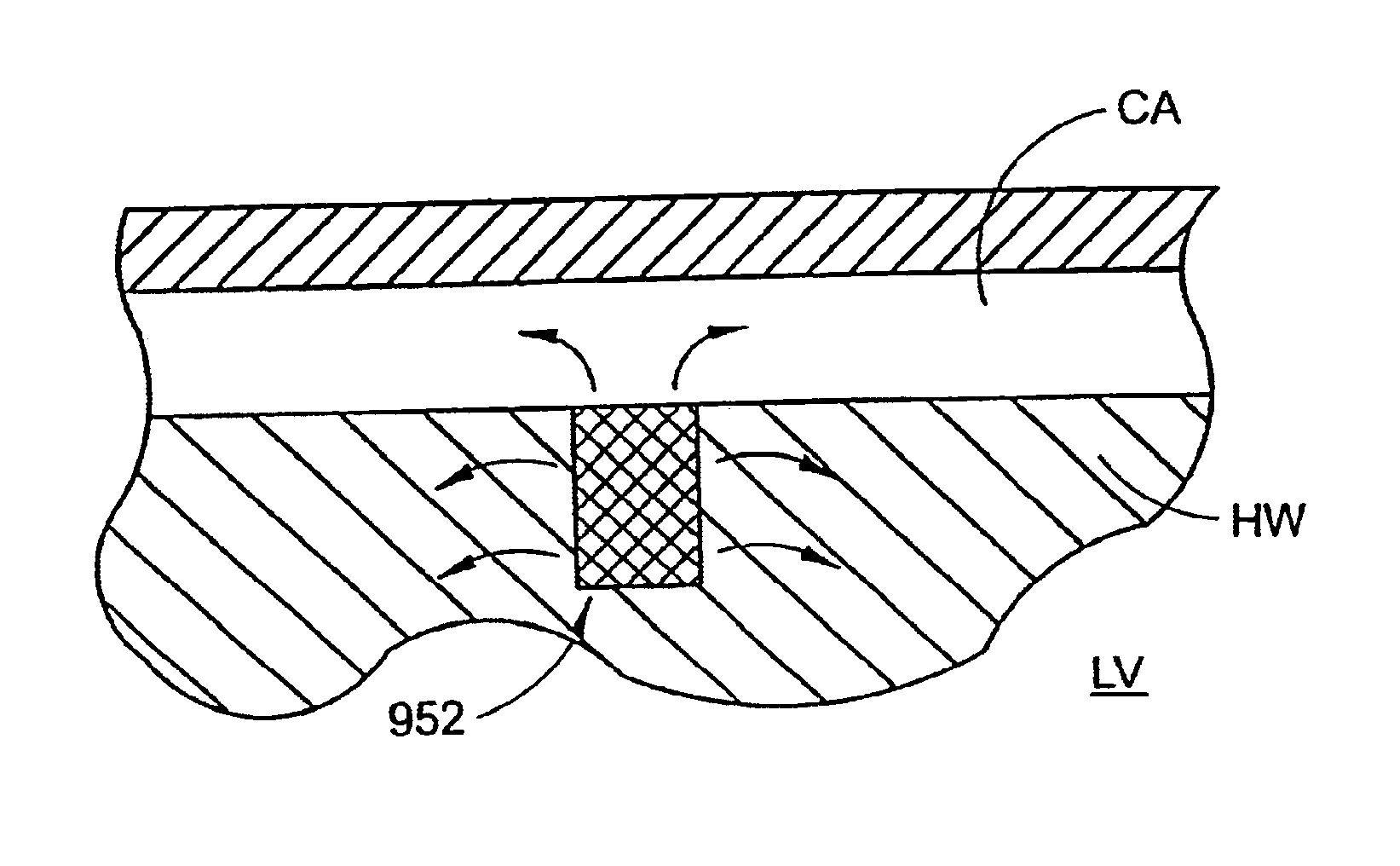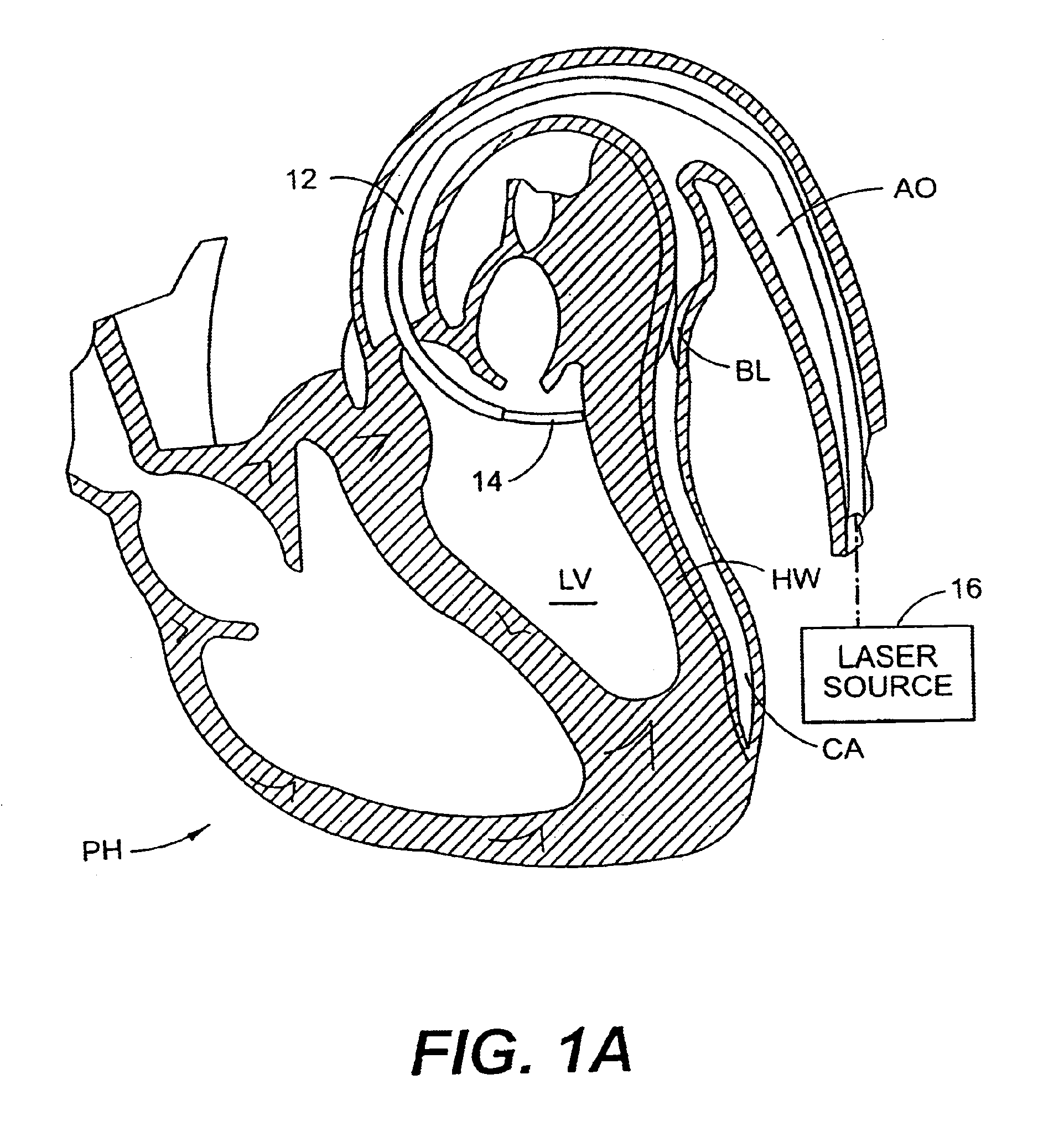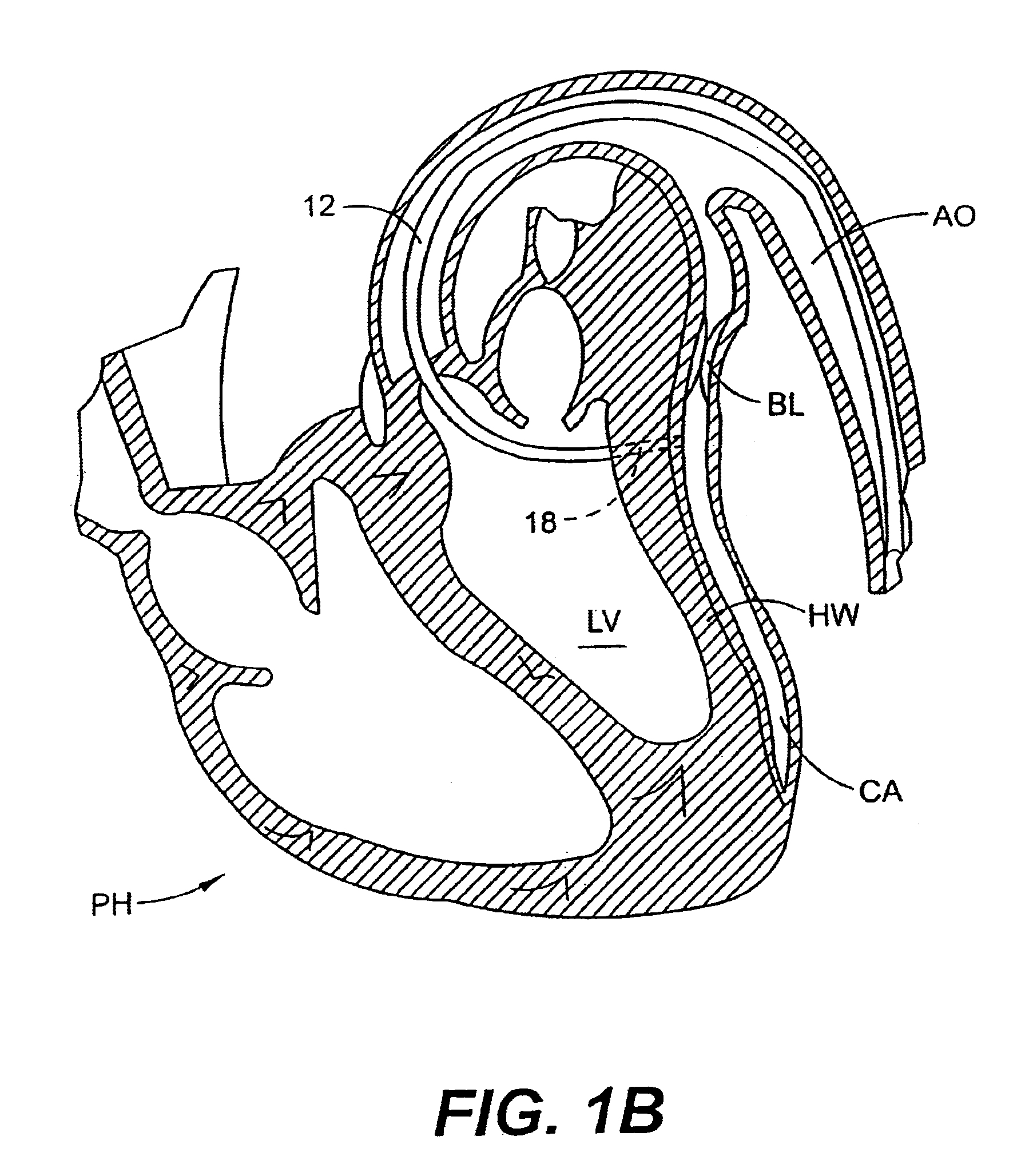Left ventricular conduits to coronary arteries and methods for coronary bypass
a technology of left ventricular conduits and coronary arteries, which is applied in the direction of prosthesis, angiography, blood vessels, etc., can solve the problems of heart attack and death, impaired heart pumping action efficiency, and coronary artery disease, and achieves less invasive and less trauma to the patient
- Summary
- Abstract
- Description
- Claims
- Application Information
AI Technical Summary
Benefits of technology
Problems solved by technology
Method used
Image
Examples
embodiment 720
[0124]FIGS. 6E and 6F show another one way valve conduit embodiment 720 that comprises soft and hard portions 724 and 728, respectively. The soft portion 724 includes a flap portion 732 having a series of slits 736 therein which may be spared equidistantly from each other as shown, or alternatively, the slits may be spaced unequally from each other. The resiliency of the conduit 720 is such that it is open during systole (FIG. 6F) but closes partially during diastole (FIG. 6F).
[0125]FIGS. 6G and 6H show another one way valve conduit embodiment 740 comprising soft and hard portions 744 and 748, in which a single slit 752 is formed in the soft portion 744. As in embodiments 6C-6D and 6E-6F, the resiliency of the soft portion is such that the conduit 740 acts as a one-way valve, with the conduit opening during systole and partially closing during diastole. Further, conduits (not shown) having an opening for blood flow, but no slits, may be used in which the portion of the conduit aroun...
embodiment 412
[0182]FIG. 34 depicts an alternative embodiment 412′ similar to the device of FIG. 33; The device of FIG. 34 has an aperture 420′, which extends through only one side of the shunt portion 418′. It should be understood that the apertures of this and the preceding embodiment may be selectively placed and sized according to the desired application, the orientation of the blood vessels employed, and the location of anatomical features, blockages, etc.
[0183]FIG. 35 depicts a further alternative embodiment 412″ that is similar to the embodiment depicted in FIGS. 33 and 34 except that there is no flange between the apertures 420 and 421, but rather a smooth transition area 430″. The shunt body 418″ is shown to have a gentle taper.
[0184]FIG. 37 is a cutaway schematic representation of the shunt device 412′ depicted in FIG. 34 mounted within the patient, with the conduit end resident within the myocardium HW. The coronary artery CA and the bypass graft 414 are shown to be placed in fluid com...
embodiment 1716
[0218]FIG. 52 illustrates an alternate embodiment 1716 with a distal extension 1720 extending both distally in the coronary artery CA as well as proximally. Thus, the distal portion 1720 of the conduit 1716 has a T-like configuration. As shown in FIG. 52, this T-like distal portion 1720 of the conduit 1716 may have a lattice construction such as the conduit 1690 shown in FIGS. 50 and 51. The main body 1724 of the conduit 1716 of FIG. 52 may be a smooth tubular structure, or may be of a lattice construction as shown in FIGS. 50 and 51.
[0219]The conduit 1730 of FIG. 53 has an articulating distal portion 1734 which may fold down either in a manner so as to either extend distally with respect to the coronary artery CA or proximally, as shown in FIG. 53. In this case, the distal extension 1734 of the conduit 1730 is preferably of a lattice construction made from a nitinol hypotube as discussed above. This distal portion 1734 is designed to collapse against the main body 1738 of the condu...
PUM
 Login to View More
Login to View More Abstract
Description
Claims
Application Information
 Login to View More
Login to View More - R&D
- Intellectual Property
- Life Sciences
- Materials
- Tech Scout
- Unparalleled Data Quality
- Higher Quality Content
- 60% Fewer Hallucinations
Browse by: Latest US Patents, China's latest patents, Technical Efficacy Thesaurus, Application Domain, Technology Topic, Popular Technical Reports.
© 2025 PatSnap. All rights reserved.Legal|Privacy policy|Modern Slavery Act Transparency Statement|Sitemap|About US| Contact US: help@patsnap.com



